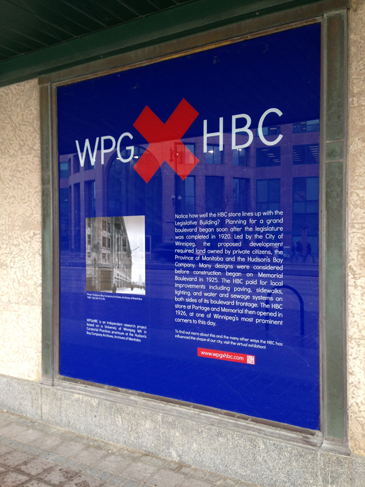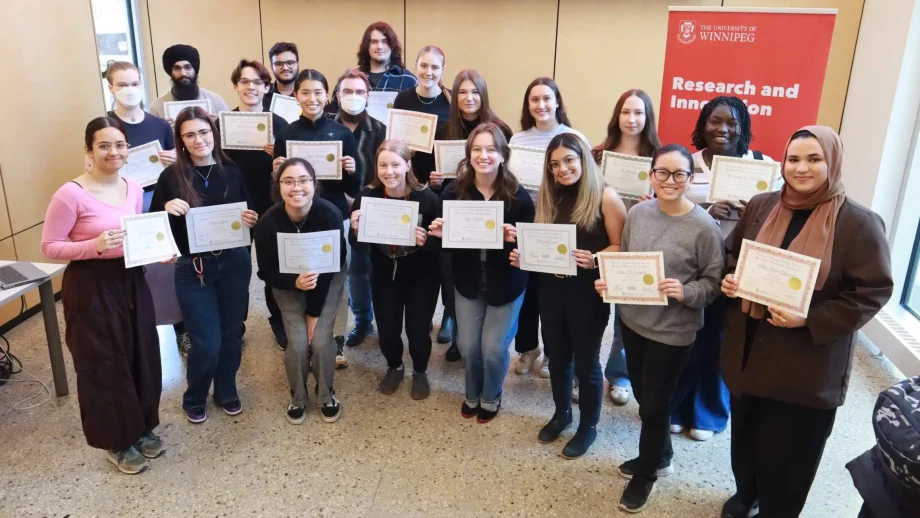When the City of Winnipeg was incorporated in 1873, the Hudson’s Bay Company (HBC) was the city’s largest landowner. This is one of the many interesting discoveries graduate student Abigail Auld uncovered while completing her practicum for her Master’s in Cultural Studies at the Hudson’s Bay Company Archives at the Archives of Manitoba.
Auld’s project entitled WPGxHBC looks at how the HBC has influenced the shape of the city since the 1870s. While researching the architecture of the downtown HBC store Auld quickly realized that the company has had a much greater influence on Winnipeg’s urban development than she had anticipated.
“Learning how the HBC’s planning and construction has impacted Winnipeg is an exciting way to learn how cities in general develop through the influence of powerful constituents,” explained Auld. “Past economics, politics and social climates have lasting effects on the shape of a city. HBC’s influence is visible throughout Winnipeg’s downtown. Old HBC buildings still exist including The Keg on Garry Street, which was originally a HBC garage. The Hudson’s Bay Company Archives at the Archives of Manitoba hold original drawings for many of the HBC’s unbuilt architectural plans, including a 1920s 11-building luxury apartment complex for the Upper Fort Garry site.”
In the late 1800s to early 1900s, the company developed the Broadway-Assiniboine area as Winnipeg’s first distinguishable residential neighbourhood. An HBC subsidiary built the city’s first traffic bridges in the early 1880s and the company was instrumental in the 1925 construction of Memorial Boulevard.
“Abigail’s findings, which were displayed in an HBC window on Memorial Boulevard along Portage Avenue, illustrate an aspect of the HBC’s past in the area,” said Patricia Bovey, a UWinnipeg Adjunct Professor of Art History, who manages Curatorial Practicums and the Practicum Seminars. “She also presented her findings at Jane’s Walk walking tour this past May. I am proud of her 360-degree approach to this unique project.”
“Abigail spent a few months researching the Archives,” said Dr. Serena Keshavjee, Department of History “She has uncovered interesting images and plans about the unbuilt Winnipeg of the past 100 years. Just as exciting as her intellectual work, is her design for the Hudson’s Bay windows where her research was highlighted and shared with the public.”
To learn about other interesting facts visit WPGxHBC which includes 50+ digitized archival records that give a visual narrative to the HBC’s influence.
The Master of Arts in Cultural Studies provides opportunities to explore culture and the arts as part of a social, economic and political environment. The educational objective of the program is to train graduate students to conduct research that reflects an interdisciplinary understanding of culture. All the MA students in the program have a year long placement, carefully matched to their long term curatorial/museological goals There are two currently approved specializations: Texts and Cultures and Curatorial Practices. For more information on UWinnipeg’s Master of Arts in Cultural Studies visit https://www.uwinnipeg.ca/index/grad-studies-ma-eng-cs.






